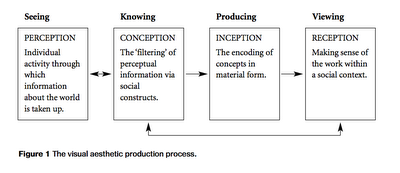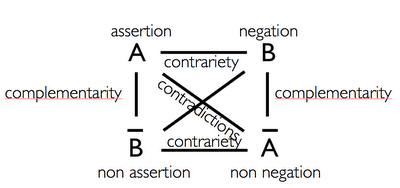If you’re new here, you may want to subscribe to my RSS feed to receive the latest Architectradure’s articles in your reader or via email. Thanks for visiting!
All foreigners who have made a choice add to their passion for indifference a fervent extremism that reveals the origin of their exile – Julia Kristeva
I recently read a book, depressing and fascinating, Strangers to Ourselves, by Julia Kristerva. This book is a journey through the notion of the stranger (the foreigner, outsider or alien in a country and society), and explores the idea of strangeness within the self (a person’s deep sense of being). In this book Julia Kristeva distinguishes the inside from the outside appearance and the conscious idea of self. She explains mostly the point of view of the foreigner, how he feels and perceives others in his welcoming foreign country. She attempts to analyze him and shows how this exile is nurtured by a deep inside exile. I share my notes because I know many foreigners who will resonate with this book.

In the first chapter, “Tocata and Fugue for the Foreigner”, the author explains her attempt to not turn the foreigner into a thing, but rather to “brush it” with no permanent structure. She presents a happy foreigner to the eyes of others, while the foreigner is actually away from his homeland because most probably he has lost his mother. As in Camus, his Stranger reveals himself at the time of his mother’s death: “One has not much noticed that this cold orphan, whose indifference can become criminal, is a fanatic of absence”. The foreigner is a devotee of solitude.
In the eyes of the foreigner those who are not foreign have no life at all: barely do they exist, haughty or mediocre. In contrast, the space of the foreigner is a moving train! As for confidence, the foreigner has no self. An empty confidence, valueless, which focuses his possibilities of being constantly other: “I do what they want me to, but it is not me. Me is elsewhere, me belongs to no one, me does not belong to me, … does me exist?”. Julia Kristeva concludes that the foreigner is a dreamer making love with absence, one exquisitely depressed. Happy? No one knows better than the foreigner the passion for solitude. “The paradox is that the foreigner wishes to be alone but with partners, and yet none is willing to join him in the torrid space of his uniqueness”.
The author proposes two categories of foreigner. The one who agonizes between what is no longer and what will never be, the advocate of emptiness, usually the best ironist, and the one who transcends, living neither before nor now but beyond, a believer and sometimes ripens into a skeptic! She explains how meeting balances wandering for the foreigner. The banquet of hospitality is the foreigner’s utopia with the brotherhood of guests who soothe and forget their differences … the banquet is outside of time!
The author shows how the foreigner constantly feels the hatred of others and how living with the foreigner (with the other) confronts people with the possibility or not of being an other, as in being in his place. Rimbaud’s psychotic ghost Je est un autre (I is an other) is the acknowledgment of this exile: to be foreign and live in a foreign country.
“Being alienated from myself, as painful as that may be, provides me with that exquisite distance within which perverse pleasure begins, as well as the possibility of my imagining and thinking, the impetus of my culture.” Split identity? Should we recognize that one becomes a foreigner in another country because he is already a foreigner from within?
How strange is Camus’ Meursault (The Stranger, 1942), so anesthetized, lacking emotions, all passion having been eradicated, and not a scratch to show for it. One could easily take him for a borderline case, or a fasle self, in short for a quasi-psychotic, rather than for a prototype of the foreigner.
Julia Kristeva brings language into this exile. The foreigner does not speak his mother tongue nor he is filled with resonance from the body’s memory! The resurrection through a new language slowly appears superficial and meaningless. This new language appears like a prosthesis, it is superficial.
Apparently, nobody listens to the foreigner, because the foreigner is only tolerated. As the author explains: “Those who have never lost the slightest root seem unable to understand any word liable to temper their point of view”. And the foreigner’s friends, aside from bleeding hearts who feel obliged to do good, could only be those who feel foreign to themselves.
Nowhere does one find better somatization than among foreigners, so much can linguistic and passional expression find itself inhibited
The realm of the foreigner slowly becomes silence. “It is the silence that empties the mind and fills the brain with despondency, like the gaze of sorrowful women coiled up in some nonexistent eternity.” Instead of approximating words, the foreigner no longer says them. The foreigner has lost his own language in a foreign land …
 Posted by Cati Vaucelle @ Architectradure
Posted by Cati Vaucelle @ Architectradure
Technorati Tags: book, culture, perspective taking, PhD, psychology, research, theory, foreigner, stranger




